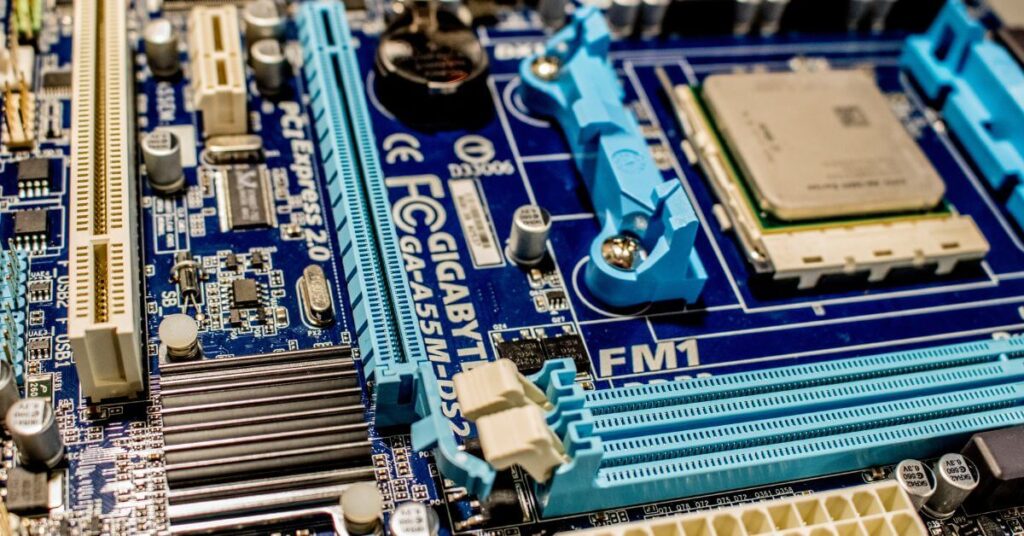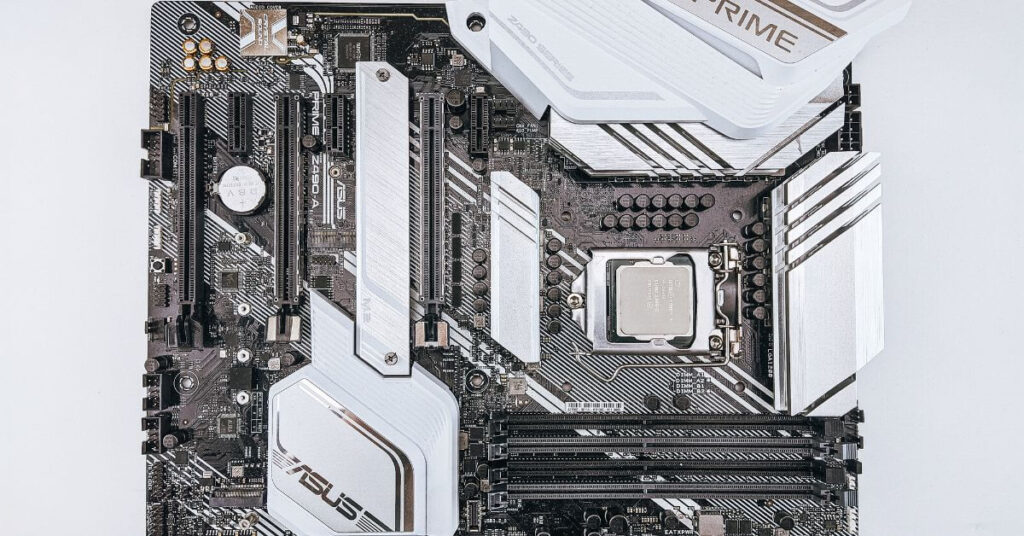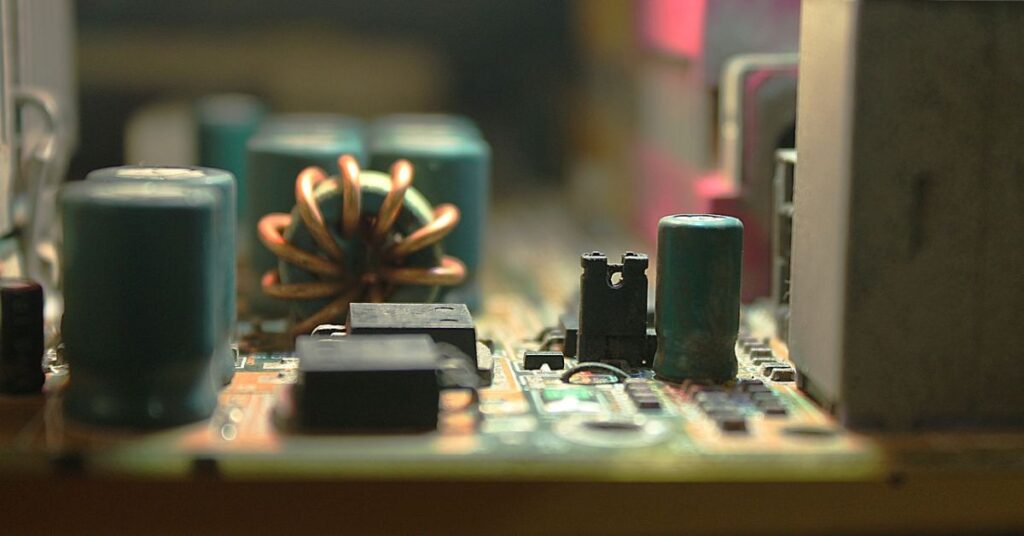The motherboard, which functions as a computer’s central nervous system, is a crucial part of the quickly changing world of computer hardware. The wealth of features and technological innovations in contemporary motherboards may captivate enthusiasts and tech-savvy people, but consumers are frequently troubled by the seemingly expensive price tags of these devices.
The question “Why are motherboards so expensive? examines the intricate web of factors influencing the cost of these essential components. To illuminate the complex factors that influence motherboard price points in the computer industry, this investigation will cover everything from manufacturing nuances and technological advancements to market dynamics and supply-demand relationships.
Table of Contents
Why are motherboards so expensive?

Technological Advancements:
Within a computer system, motherboards are essential for integrating and facilitating communication between different hardware components. Motherboards have to be updated with new features and capabilities as technology develops. Examples of these include support for faster processors, more memory, advanced connectivity options (PCIe, USB), and compatibility with the newest storage technologies (NVMe SSDs). The study, creation, and application of these innovative features impact the total cost of manufacturing.
Component Quality:
The quality of a motherboard’s parts has a significant impact on both its performance and dependability. Robust circuit boards, long-lasting capacitors, and effective voltage regulation modules are examples of high-quality components that add to the longevity and stability of a motherboard. To guarantee the dependability of their products, manufacturers frequently spend more on high-quality components, which raises the final cost.
How To Turn On Motherboard Without A Case?
Read this helpful article on your computer as well.
Manufacturing Complexity:
Using cutting-edge equipment, precise engineering, and quality control procedures, the manufacture of motherboards is a complicated process. The complex circuitry of the motherboard and the level of accuracy needed when soldering and assembling parts add to the manufacturing complexity and, ultimately, production costs.
Costs of Research and Development:
To maintain their competitiveness in the market, motherboard manufacturers must devote a large amount of funds to research and development. Significant financial outlays are needed for the processes of developing and testing new features, enhancing performance, and guaranteeing hardware compatibility. Each motherboard’s total cost is influenced by these R&D expenses, which are spread over the number of units manufactured.
Economies of Scale:
As production volume rises, the cost per unit of motherboard manufacturing reduces due to economies of scale. However the initial setup expenses—which include tooling and design—are high. Higher per-unit costs from smaller production runs could be passed on to customers by manufacturers.
Market dynamics:
Pricing may be affected by the demand for motherboards, which is impacted by consumer preferences, industry advancements, and technology trends. Price volatility can be attributed to both global events that impact the supply chain, such as shortages of semiconductors, and fluctuations in demand.
Brand and Features:
Because of their perceived quality, customer service, and warranty, motherboards from well-known brands frequently fetch higher prices. To meet the needs of power users and enthusiasts, motherboards with sophisticated features—like the ability to overclock, high-end audio components, and improved power delivery systems—also tend to be more expensive.
Reson behind the motherboards is pricing up or down
Motherboard prices are subject to fluctuations due to the complex interaction of supply chain dynamics, technological advancements, and market demand. Comprehending the underlying factors causing these price fluctuations illuminates the complex dynamics influencing the motherboard market.

Factors Influencing Motherboard Pricing
- Technological Advancements: The introduction of new and advanced technologies, such as support for faster processors, faster memory, or more features, may result in higher manufacturing costs and, ultimately, higher motherboard retail prices.
- Problems with the supply chain: Recent disruptions in the semiconductor supply chain have the potential to affect component availability and raise production costs. These difficulties could put upward pressure on prices.
- Economies of Scale: Lower costs per unit are frequently the result of higher production volumes. If manufacturers are successful in achieving economies of scale, motherboard prices may stabilize or even drop.
- Competition Among Manufacturers: As businesses compete to provide better features at competitive prices, fierce rivalry among motherboard manufacturers can occasionally result in price wars. Certain motherboard models may see price stability or even decreases as a result of this competition.
- Market Demand: A high demand for motherboards could result in higher prices, particularly during times when consumer spending is up or when new products are released. On the other hand, lower demand could result in more affordable prices.
- Currency Exchange Rates: Variations in exchange rates can affect the price of motherboards by raising the cost of importing parts or completed goods.
- Customer Preferences: Manufacturers’ pricing strategies may be affected by changes in consumer preferences for particular features or form factors. For instance, costs may increase if there is a growing need for motherboards that are small or packed with features.
How Does The Motherboard Affect Gaming Performance?
Read this helpful article on your computer as well.
difference between cheap vs expensive motherboard
Here’s a simple chart highlighting key differences between cheap and expensive motherboards:
| Feature | Cheap Motherboard | Expensive Motherboard |
|---|---|---|
| Build Quality | More PCIe slots, additional features, and ports | High-quality components, durable construction |
| VRM Quality | Basic Voltage Regulator Modules (VRMs) | Premium VRMs with better power delivery |
| Expansion Slots | Limited PCIe slots and fewer connectivity options | More PCIe slots, additional features and ports |
| Overclocking Capability | Limited or basic overclocking support | Advanced overclocking features and stability |
| Audio and LAN | Basic onboard audio and LAN components | High-quality audio codecs and premium LAN chips |
| BIOS/UEFI Interface | Simplified BIOS/UEFI with fewer options | Feature-rich BIOS/UEFI with advanced settings |
| RGB Lighting and Aesthetics | Minimal or no RGB lighting | Extensive RGB customization and premium aesthetics |
| Warranty and Support | Limited warranty and basic customer support | Extended warranty, better customer service |
Why I should buy an expensive motherboard?
Here are compelling reasons why you might consider buying an expensive motherboard:

Advanced Features and Connectivity:
Several PCIe slots, support for high-speed RAM, and the newest connectivity options like USB-C and Thunderbolt are just a few of the advanced features that high-end motherboards frequently have. An expensive motherboard might be the best option if you need a lot of connectivity and the newest features.
Improved Power Delivery and Overclocking:
Advanced Voltage Regulator Modules (VRMs) and superior power phase designs are common features of high-end motherboards. More consistent power delivery to the CPU is the outcome, and overclocking depends on this. An expensive motherboard with strong power delivery systems can make a big difference if you’re an enthusiast trying to overclock your system to reach new performance heights.
Superior Components and Construction:
Pricey motherboards frequently make use of premium components, like multi-layered PCBs (Printed Circuit Boards) and premium capacitors. Better overall build quality, stability, and durability result from this. If sturdiness and longevity are your top priorities, a pricey motherboard might be well worth the money.
Advanced BIOS/UEFI Features:
More sophisticated BIOS or UEFI firmware with a large number of customization options are usually available on high-end motherboards. Users who desire exact control over system settings, overclocking parameters, and other performance-related configurations may find this to be especially helpful.
Superior Aesthetics and Design:
Stylish finishes, RGB lighting, reinforced components, and other aesthetic features are common on pricey motherboards. If you value aesthetics and are building a high-end workstation or gaming rig, purchasing a motherboard with an eye-catching design will improve the overall appearance of your system.
Longevity and Future-Proofing:
Top-tier motherboards are made to support the newest hardware developments and technologies. Purchasing a motherboard of this kind could help you future-proof your system by guaranteeing that it will work with future CPUs, GPUs, and other accessories. By doing this, you may prolong the life of your system until an upgrade is required.
Manufacturer Support and Reputation:
Reputable motherboard producers frequently provide dependable, high-quality goods. Investing in a costly motherboard from a reputable brand can offer assurances regarding the dependability and quality of the product. Furthermore, trustworthy manufacturers usually provide better warranties and customer service, guaranteeing help in the event of any problems.
Specialized Features for Enthusiasts:
Pricey motherboards may have features like premium audio components, advanced cooling solutions, and diagnostic tools that are intended for enthusiasts. If your needs go beyond everyday usage, these features may be worth the extra money.
Can I go with a cheap motherboard?
Purchasing a cheap motherboard can make sense in some situations, especially if you have limited funds and certain usage needs in mind.
Here are some explanations for why you might decide to go with a more affordable motherboard:

- Cost Savings: The cost savings are by far the most obvious benefit of selecting an inexpensive motherboard. A less expensive motherboard lets you prioritize cost-effectiveness or stick to a tight budget by freeing up more money for other essential parts like the CPU, GPU, or extra RAM.
- Basic Computer Requirements: A cheap motherboard can frequently satisfy these needs without extra features that you might not use, such as web browsing, office applications, and media consumption. These are examples of basic computing needs.
- Entry-Level Gaming: A cheap motherboard can be a good option for entry-level gaming, where you might not be taxing the system to the maximum. For less demanding games, many inexpensive motherboards continue to support mid-range CPUs and GPUs, making for a satisfying gaming experience.
- Office and Productivity Builds: A less expensive motherboard may be more than adequate if you are building a computer for productivity tasks, office work, or as a simple home server. In most cases, these applications don’t need the sophisticated features that come with more expensive models.
- Flexibility for Upgrades: Selecting a less expensive motherboard may give you greater options for upcoming changes. It can be a smart move to start with a less expensive motherboard and gradually increase your budget for components like the CPU or GPU if you intend to upgrade your system over time.
- Space Restrictions: Smaller and less expensive motherboards might be the best option in compact or small form factor builds where there is a shortage of room. These boards frequently offer essential features without superfluous extras.
- Less Complexity for Novices: A less complicated and more affordable motherboard may be easier to use for people who are new to PC building and are not interested in overclocking or sophisticated features. It lessens the likelihood of making configuration mistakes and simplifies the build process.
- Pre-Built Systems: It is typical to find less expensive motherboards in these configurations if you are buying a pre-built system or a low-cost desktop. A low-cost motherboard might be in line with the overall cost-saving objectives of users who value the ease of use of a pre-assembled system.
Conclusion
When it comes to motherboard selection, the choice between a costly and inexpensive motherboard ultimately comes down to personal preferences and financial constraints. Expensive motherboards can be equipped with cutting-edge features, better construction, and future-proof capabilities; on the other hand, more affordable options are more reasonably priced and practical for basic computing requirements.
The secret is to match the motherboard selection to particular usage needs and budgetary limitations. The varied motherboard market serves a range of users, whether they are looking for high-end performance or an affordable option. In the end, a careful evaluation of requirements and available resources directs the choice, guaranteeing a reasonably priced and well-rounded computing experience.
Frequently Asked Questions
What is a motherboard, and why is it important?
motherboard connects different hardware components and is the primary circuit board in a computer. It is an essential component of a working computer because it distributes power and facilitates communication.
What factors should I consider when choosing between an expensive and a cheap motherboard?
Take into account the features you want, your intended usage, your budget, and whether you need advanced features like overclocking. While inexpensive motherboards prioritize cost savings, expensive motherboards provide premium features.
Are expensive motherboards worth the investment?
Sure, as long as you put quality construction, future-proofing, and cutting-edge features first. More expensive motherboards often have better components, longer lifespans, and support for overclocking.
Can a cheap motherboard meet my basic computing needs?
Indeed. A cheap motherboard can be a wise investment if you use it mainly for office applications, light gaming, or daily tasks.
What role does the motherboard play in gaming performance?
Even though the GPU affects gaming performance more directly, a motherboard with strong PCIe support, RAM compatibility, and dependable power delivery can help improve gaming performance.
Do I need an expensive motherboard for a gaming PC?
Not always. Many gamers can find what they need in a mid-range motherboard with the right features. Advanced features and aesthetics are major factors in the selection of expensive motherboards.
How important is brand reputation when choosing a motherboard?
Reliability, warranty support, and build quality are all impacted by brand reputation. Reputable brands frequently provide more dependable products and superior customer service.
Are there risks associated with choosing a cheap motherboard?
Limited features, poorer build quality, and fewer upgrade options are a few risks. Make sure the motherboard you have chosen satisfies the requirements for the use for which it is intended.
How often do motherboard prices change, and what factors influence these changes?
Some variables, including changes in the semiconductor supply chain due to global events, supply and demand, and technological advancements, can affect motherboard prices. Prices could alter in response to new model releases and market developments.
